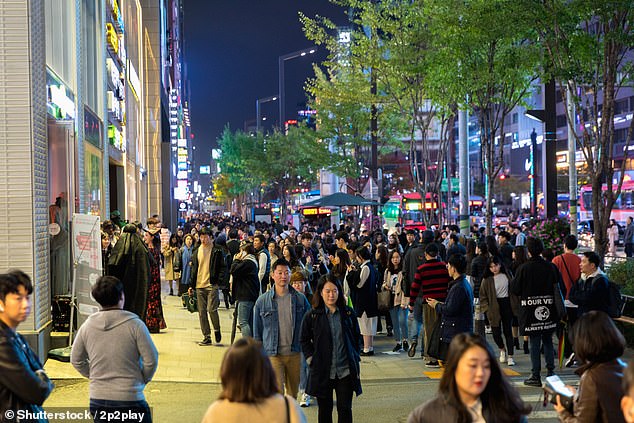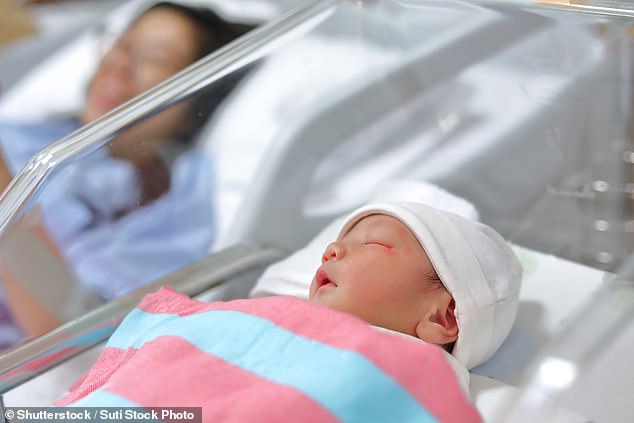South Koreans will become extinct by 2750 if they don’t start having more babies, according to a study.
The country, which according to Times which “faces extinction because of the world’s first self-inflicted genocide” has recorded another sharp drop in birth rates last year: the average woman has an average of 0.72 children in her lifetime.
Now, demographers worry that if the downward trend, which has continued for decades, continues at this pace, South Koreans will not see the end of the millennium.
Last year’s figure of 0.72 is the lowest since records began 54 years ago.
South Korea has a current population of 52 million.
230,000 babies were born last year, compared to 249,000 in 2022. This represents a decrease of 7.7 percent.
The number of annual deaths is also decreasing, but the decrease is not significant enough to balance the population level.

South Korea has a current population of 52 million, but it is declining. 230,000 babies were born last year, compared to 249,000 in 2022. This represents a decrease of 7.7 percent.
Deaths fell 5.4 percent compared to 2022 to 352,721, meaning there was a population decline of 122,721.
This was the fourth consecutive year in which there were more deaths than births in the country.
To balance the numbers, South Korean women must have an average of 2.1 babies in their lifetime, three times the current level.
If the pattern does not change, the future of the nation’s inhabitants looks bleak.
Demographers have projected that even with a birth rate of 1.19, much higher than the current level, the country will see a decline of 12 million people in 32 years.
This means that more than 1,000 people will disappear from the population every day.
For 2136, the numbers look even more worrying. Projections show that there will only be 10 million people in the country at this time. This is barely more than the current population of the capital of Seoul.
As the numbers fall, the rate at which the population declines becomes slower. This can be visualized by repeatedly halving large numbers. If you reduce half a million, you lose 500,000, but when you reduce half 500,000, you only lose 250,000. The line of population decline will slow, but continue.
And by the year 2750, demographers project, if things don’t change, the last South Korean will die.
Of course, other factors can change the projections, such as immigration, which is growing globally, and longevity, which is increasing.
South Korea is not the only country facing the prospect of underpopulation, despite being considerably worse than most of the rest of the world.
Nine in ten countries face the threat of an “underpopulation” by the end of the century, scientists have warned.
A report found that 93 percent of nations will not have enough children to replace people who die in 2100, leaving them with too few young people to work, pay taxes and care for the elderly.
The International Federation of Fertility Societies (IFFS) has warned that the global fertility rate (the number of children born per woman) is falling dramatically.
In 2022, when South Korea was at a comparatively better level of 1.39, the United States was at 1.89 and the United Kingdom at 1.87.
Not all countries are at risk of population decline.
Many countries in Africa have populations that are growing enormously.
Niger, for example, had an average birth rate of 6.86 in 2022, almost ten times the figure for South Korea in 2023.
There are several reasons why South Koreans are having fewer children than before.


Demographers warn that if South Koreans don’t start having more babies they will become extinct
On the one hand, the cost of education and childcare is more expensive than before.
There is also a cultural notion in the country that women should stay at home and take care of the children while men go out to work to earn money and women are not as comfortable with that as they were in the 20th century.
The South Korean government is desperate to break this trend and keep the country populated in the future.
In fact, as the Times reported, they have spent tens of billions over the past 17 years trying to promote reproduction and get people to have more children.
They even offer women one million won (£640) a month for each child in benefits.
